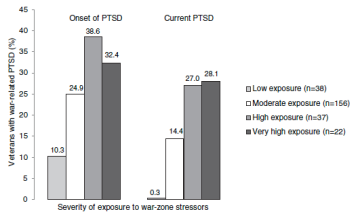
iom
The Institute of Medicine, the health arm of the federal National Academy of Sciences, published a new and comprehensive study on treating Post-Traumatic Stress Disorder Friday
It has been all over the airwaves and electronic waves this past weekend. I was actually surprised by the extent of the media coverage, as there were few new revelations to those who are intimately involved in military mental health. Battleland editor Mark Thompson asked me repeatedly: “Where is the news?” As someone who worked on the report for the past two years, let me offer some details on Treatment for Posttraumatic Stress Disorder in Military and Veteran Populations – Initial Assessment.
Rates of PTSD have been published for years. Difficulties with access to care, including stigma and difficulty getting appointments, have been known to both the DoD and the public through the Army’s seven Mental Health Advisory Teams, the Rand report, Invisible Wounds, and multiple other reports.
The difficulty in evaluating the success—or failure– of the multiple resiliency and treatment programs has also frustrated both those in the military and out for years. Phase II of the report should have new information, including program evaluation.
What was done very well in this IOM report was pulling the known information all together into a cohesive narrative.
I want to focus on a few of the recommendations, which were only partially covered by the media.
— The one for annual screening was focused on by AP and grabbed headlines around the stratosphere. Personally I believe there is already a lot of screening: the Post Deployment Health Assessment, Post Deployment Health Re-assessment, and Periodic Health assessment, to name a few.
— The question is what happens after screening? How to get care in a nurturing manner that the Soldiers and other service members will accept? How to keep it from affecting their security clearance and career?
— Better scientific evaluation of the new promising integrative therapies, such as yoga, acupuncture and therapy dogs, is sorely needed. The National Intrepid Center of Excellence is leading some of that work, and hopefully there will be results to focus on in Phase II.
— Perhaps the most critical recommendation is the need to find PTSD’s biological fingerprints. Such biomarkers are things you can measure in the brain or blood. Currently there are no useful ones for PTSD. One Mind for Research, an organization now led by retired Army general Peter Chiarelli, is trying to do just that.
The key to solving a problem is identifying it. The quest for PTSD’s biological markers could be – will be – an important step in dealing with its challenges.


